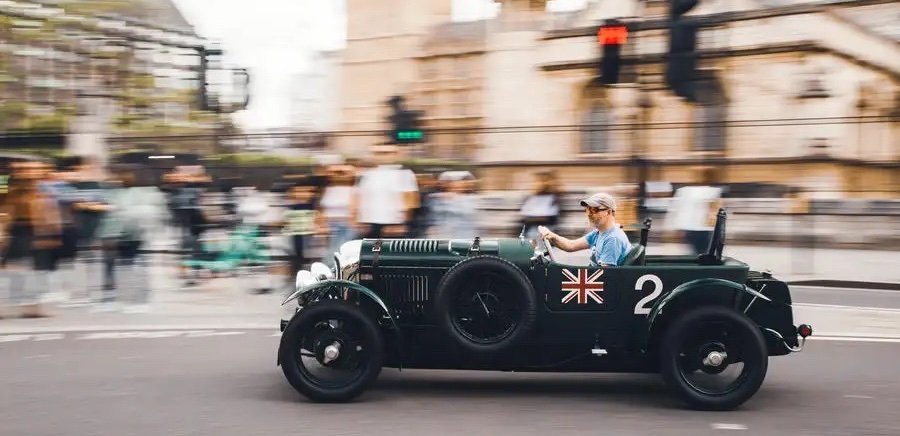‘That’s a very cool car’, coos the cyclist as he pulls up alongside us at a set of traffic lights in central London.
He’s far from the first of our fellow road-users to offer this positive appraisal, and we’ve barely been in the car for 15 minutes.
As the signals turn green and we move away he chimes-in with another observation, ‘Wow, it’s electric - that’s amazing’. Again, we’ve heard this before, and we’ll continue to hear it for the rest of our jaunt around the capital.
Our two-wheeled friend keeps pace with us for a hundred metres or so before the traffic slows again and he’s able to slip ahead through the snarl-up. However, just as he disappears he takes one more glance back at us and, with a big grin, shouts, ‘You have the best day!’.
It's an unexpectedly generous and friendly wish from a resident of what is traditionally the UK’s grumpiest city, but it’s also largely unnecessary instruction because, frankly, we’re already having a whale of a time.
Despite being in what is likely to be the slowest and most basic car an Autocar tester will pedal in 2024, and being confined to the congested streets of London, both myself and snapper Jack Harrison (perched behind me) have been giggling like idiots from the moment we first turned a wheel.
Welcome, then, to the Bentley Blower Junior, the latest Lilliputian creation from the Little Car Company.
The Little Car Company?
The Bicester-based concern has already produced a number of exquisite pint-sized and electrically powered motors, most notably an Aston Martin DB5 and a Ferrari 250 Testarossa, but the Bentley is the firm’s first road-legal offering, hence our chance to sample it around the streets of the capital.
London’s traffic-clogged highways and byways might seem an odd place to launch a new car, but the choice of location is actually a stroke of genius.
For starters, despite being based on a car that was bred for high speed competition, the Little Car Company’s (let’s call it LCC for short, shall we?) Blower has extremely modest performance and range (top speed is 45mph, while you might be able to squeeze 65 miles out of a full battery), making the open road a destination only for the brave or the foolhardy.
Moreover, London is also the birthplace of the Bentley brand, company founder W.O. Bentley having assembled his first car here in 1919.
In fact, you can still visit the site of the very modest workshop where it all started. Located down a quiet mews just around the corner from Marylebone Station, 47 Chagford Street has long since been turned into a residential property, but a small blue plaque pinpoints the exact place where a legend was born.
We pull up outside to take a few shots, the pause in proceedings proving the perfect opportunity to take stock of LCC’s handiwork.
Engineering work
It’s the largest, literally, project it’s taken on, the car’s 85% scale an increase from the usual 67 to 75% range it works in - even so, it still fills less space on the road than a narrow-bodied Caterham Seven.
Like all of LCC’s line-up, this is an officially licenced product, hand-crafted using extensive 3D imagery of the original, full-sized machine.
In this case, it’s the 1929 4-and-a-half-litre Bentley Supercharged Team Car No.2 that raced in the following year’s Le Mans 24 hours. Engineered and built by original ‘Bentley Boy’ Sir Henry ‘Tim’ Birkin, the full-sized machine (see panel) is now part of Bentley’s heritage collection.
Where possible, original materials and methods are used in every LCC build, so the Junior’s aluminium body panels are hand-formed, while the seats and interior are trimmed in the same Dark Green Lustrana Hide found in the 12 Blower Continuation Series cars that were built in 2020.
There’s also a machine-turned dashboard packed with period dials, repurposed in a couple of cases to show the battery capacity and the motor’s current output, while like the original the large four-spoke steering wheel is rope-wound, although in the Junior it sits ahead of a centrally-mounted driver’s seat.
Only a TFT display for the clock and a rather incongruous pair of posts for the seat belt mountings spoil the period-perfect picture.
Under the skin there’s a ladder frame chassis that carries the body and leaf-sprung suspension complete with friction dampers.
Of course, unlike its rather larger great-grandfather there’s no bellowing supercharged four cylinder engine, power (and we use that term in the loosest possible terms) instead comes from a 20bhp motor that drives the rear wheels through a single-speed reduction gear, while the only noise is an incongruous space-age whine from the pedestrian warning sound generator.
There’s also a 10.8kWh battery, which in a neat touch is recharged through a CCS port hidden in the fake supercharger housing sticking out from the bottom of the grille.
Other deviations from the original include a light and strong carbon fibre tub for the body structure in place of the original’s ash frame, although it is covered with the correct impregnated fabric for that authentic Twenties look.
On the road
With the pictures committed to memory card, we climb aboard and continue our tour of London. Our next logical stop-off should be the suburb of Cricklewood, where W.O. moved his operations months after starting the company, but that’s a six-mile, traffic-strewn schlep away and we’ve only got the car for a few hours.
Besides, the original Blower was actually cobbled together at Birkin’s own premises in Welwyn Garden City, Hertfordshire, and with only around 40% charge we’d struggle to get there, let alone make the return trip.
Instead, we decide on a sight-seeing trip to take in some thoroughly British tourist traps in our suitably union flag-adorned Racing Green tour bus.
Getting out of the narrow mews is a doddle, the Bentley barely stretching the tape-measure at a slim-hipped 1.5 metres.
Those compact dimensions and a panoramic view out (there are no windows to speak of, or a roof - true Bentley Boys never put the hood up anyway, even in the wettest and windiest weather), mean the Junior is perfect for sliding into the smallest gaps in the traffic.
It's so narrow in fact, that you soon forget about flicking the bakelite-like switch for the indicators and instead use your outstretched arms as turn signals, pushbike-style.
Given the blanket 20mph speed limit and the frequent jams, we’ve got the car in Comfort mode (there’s also Bentley and Sport settings, each accessed by twirling a wooden rotary switch on the dash), which limits power but increases the battery regeneration when slowing to halt.
Even so, there’s more than enough acceleration to keep-up with the (slow) flow of traffic, and because you’re so exposed even 15mph feels perilously quick as you're gently blown around by the elements (eyewear is a essential, because the small aero screen is next to useless).
On the one short stretch of dual carriageway we encounter on the run back to the car’s base deep in the bowels of Westfield shopping centre, we get to engage Sport and unleash the full 20bhp.
Hunched over the wheel, shoulders tucked-in and teeth gritted, we feel like we’re bowling down the Mulsanne straight and giving it the full Birkin, even though we’re only just nudging the posted 40mph limit.
The sense of flat-out fun is enhanced by the bone-shaking ride from that leaf sprung suspension and vintage-spec handling that makes every roundabout, junction and width-restricting chicane a real elbows-out affair, the light but fairly long-winded worm-and-roller steering feeling vague around the straight ahead and lacking any real self-centring.
Happily, the modern disc brakes are strong and surprisingly feelsome in their action.
Verdict
Yet none of this matters, because this car is about so much more than raw statistics and honed driving dynamics. For most of the day we rarely exceed 20mph and, well, that’s just fine. Instead we revel in the sense of occasion and, yes, the attention.
As we move past the Houses of Parliament and Buckingham Palace the throngs of tourists turn their smartphones from the centuries-old attractions to the shrink-rayed Bentley.
Everytime you stop there’s a barrage of questions and big grins, which only get broader as you give them a blast of the car’s Toad of Toad Hall klaxon as a parting shot. As a feel-good mode of transport, the Blower is hard to beat.
Objectively of course, the LCC Bentley makes no sense. It offers meagre performance, a limited range and absolutely no protection from the weather.
And then there’s the thorny issue of price, because at £90,000 plus taxes this is one very expensive plaything - although with just 99 examples planned, exclusivity is guaranteed.
Yet anyone with the means could spend twenty times this sum on an unobtanium hypercar and not garner 10 percent of the attention or, crucially, the good will.
Wherever we went we were welcomed with open arms by pedestrians, cyclists and other drivers alike. Simply put, they love the baby Blower. And so do we.
Price: £90,000 (plus local taxes)
Motor: 48V electric motor
Transmission: 1spd reduction gear, rear-wheel drive
Power: 20bhp
Torque: 98lb ft
Drive battery: Lithium ion, 10.8kWh
Kerbweight: 550kg
0-62mph: N/A
Top speed: 45mph
Range (claimed): 65 miles
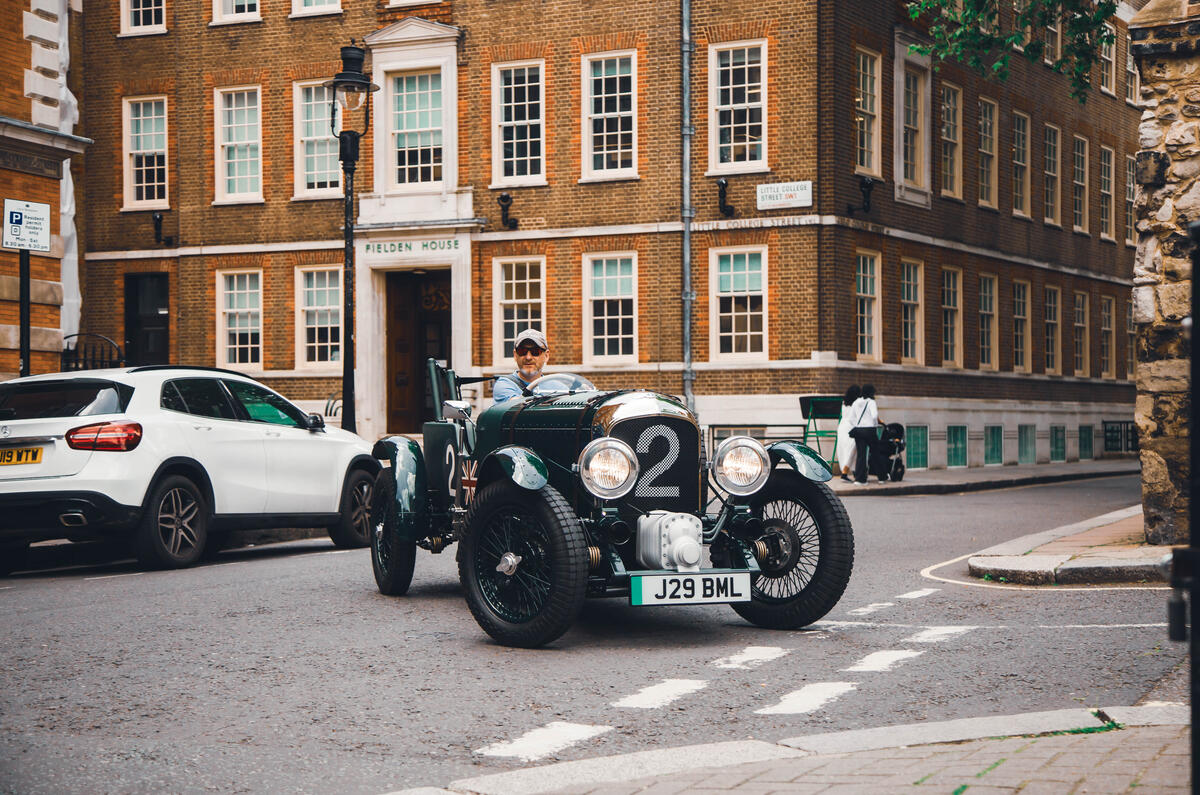
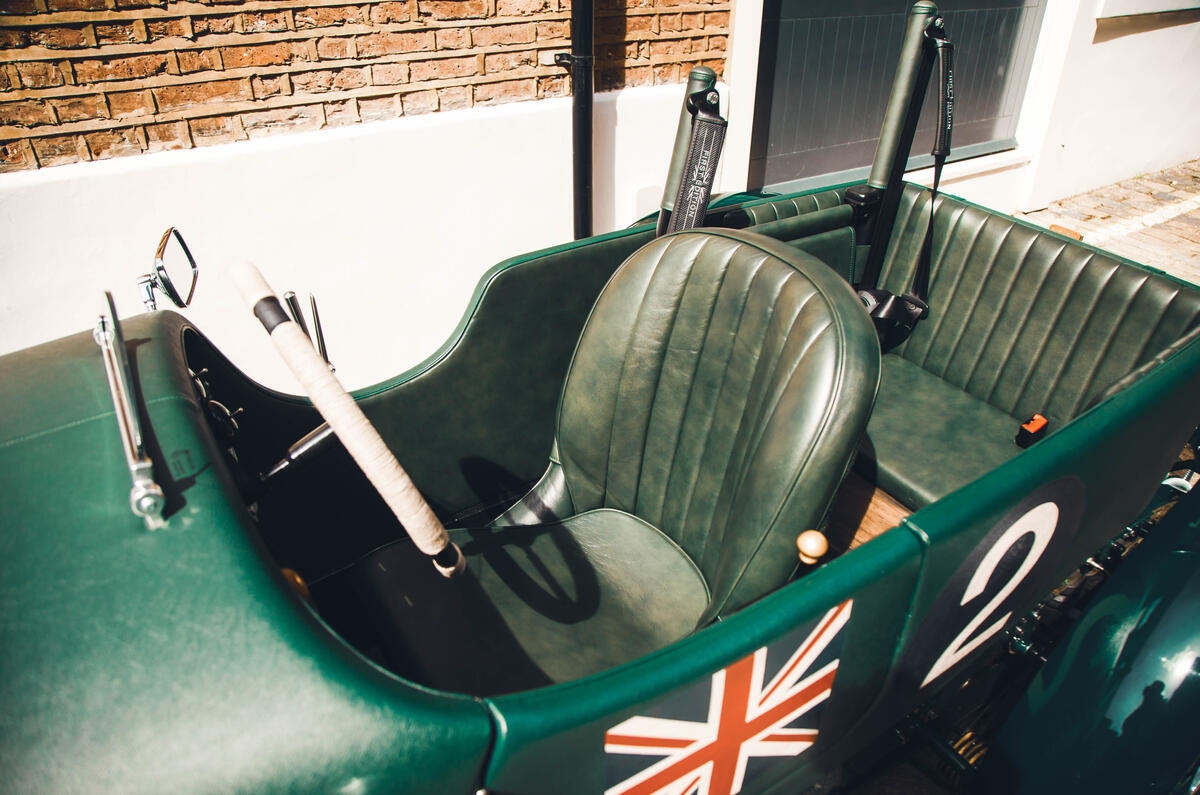
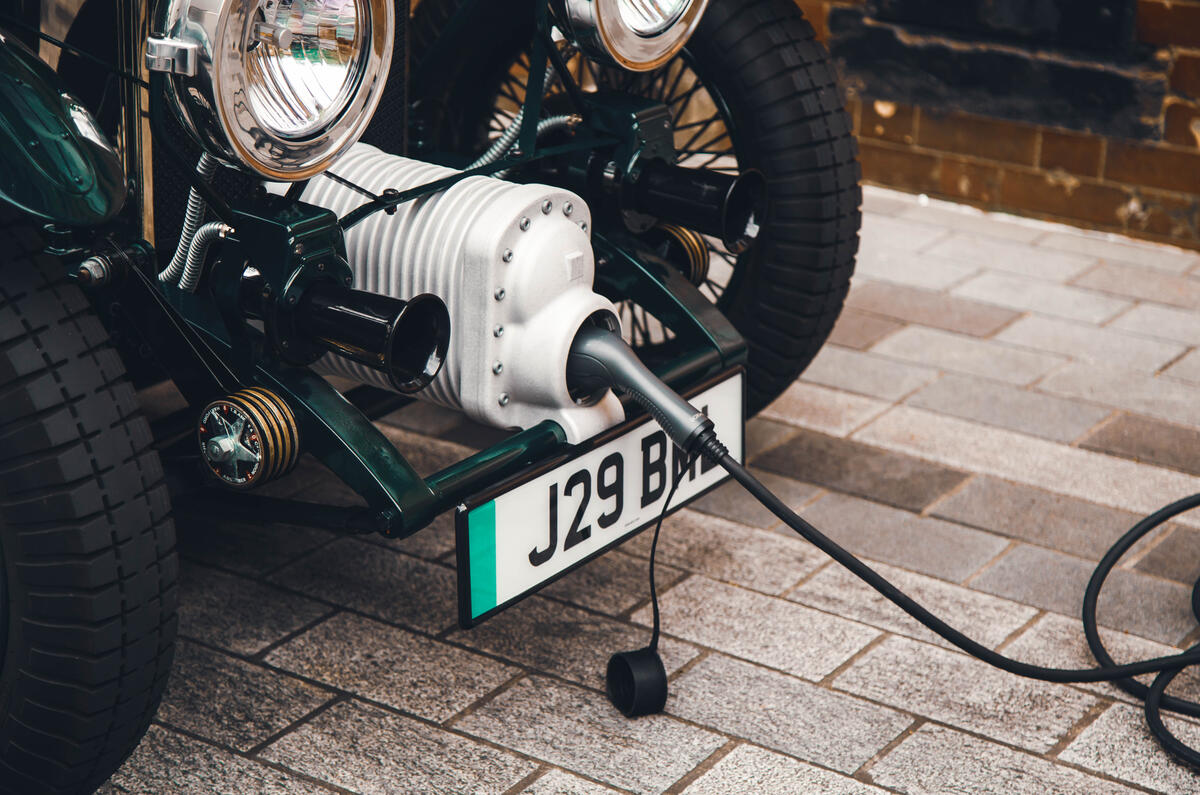
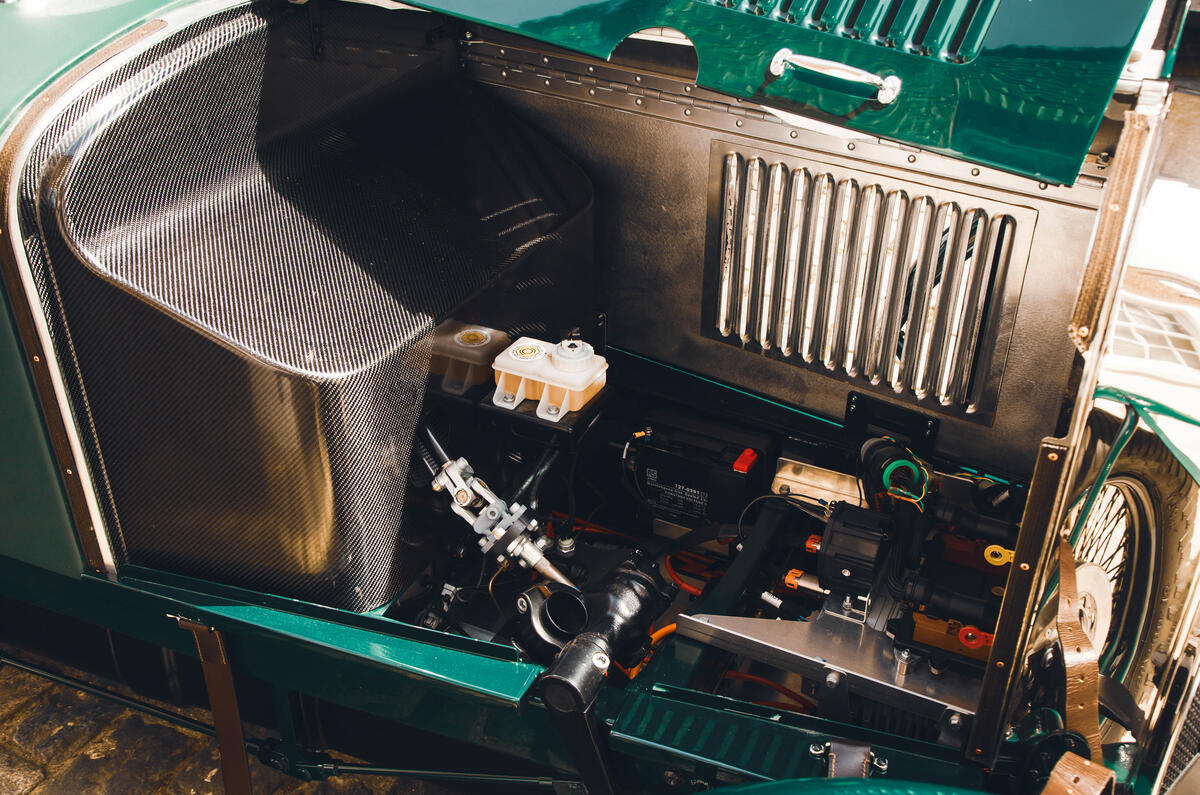
Verwandte Nachrichten
